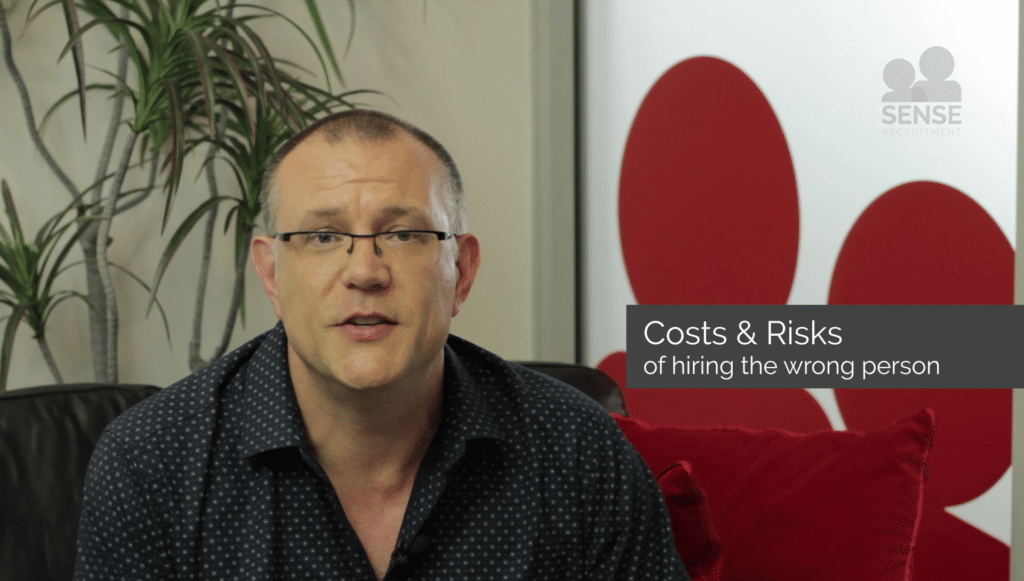Transcript:
Hello everybody, I’m here today to talk about the cost and risk of hiring the wrong person, or making a poor hiring decision. And how to mitigate some of those risks.
The exercise of recruitment is very expensive, even when you hire the right person. If you hire the wrong person, or a person who is not quite right for a role, you can incur from $53,000 up to $240,000 in costs to rehire for that position.
Some of the unrelated financial costs of this can be an impact on team morale, and team stress. So if the person you hired isn’t really working, a lot of that work then falls onto the team to complete whilst you deal with that situation.
There’s also time out for managers interviewing for a rehire, time out for training for team leaders, supervisors and other staff. And there’s also hidden costs around onboarding people through IT systems and other corporate functions that need to addressed every time you hire a person.
I guess there’s a few things that can mitigate these risks, and they’re pretty simple things that hiring managers and teams can do to ensure you hire the right person first time every time, and hopefully you don’t have to go through the process to rehire.
One of the first things is – trust your gut. And whilst that sounds a bit counter intuitive, if you use your own gut-assessment of people when you meet them, and the interactions you’re having with them to potentially sound out any red flags that you see during the interview. You can use that in combination with modern recruitment process, technology and methodology, in order to make sure you’re making a very rounded decision. So, something that’s not necessarily based on the technical capabilities of that person, or just the cultural personality fit. You get a good mix of your own assessment, and some of the hard and fast metrics around the recruitment process you may be using. And of course you need to make sure that those processes and metrics are robust and in place as well.
One of the other things you should do is look at due diligence in terms of background checking and reference checking. Firstly, the references that are supplied need to be people that can really comment and speak to that person’s capabilities and their experience. Their cultural fit in the business that they were in previously, and also the type of person they are and how they interact with teams.
People like managers, senior peers who they had some interaction with, or potentially customers in other organisations can usually provide that information.
It’s also good to do your due diligence on the referees that are provided. Make sure they actually are the people that they say they are, and the person is who the candidate says they are also.
Use a robust and focused interview process. You don’t want to be interviewing around clichéd interview questions for example: ‘Where do you see yourself in five years?’, and ‘tell me about a time when…?’. Those sort of interview questions have their place, but really you need to be identifying that person’s specific successes, experiences, and how they’ve contributed in the past to the organisations that they’ve worked for.
From that information, you should be able to build a pretty good success profile as to how that person is going to perform internally in your roles.
Key to this is – once the person is on board, make sure that you provide clear, defined goals, KPIs, and any other performance measures for that person upfront.
Essentially that gives you the opportunity to benchmark for performance, and the person understands what is required from them, and they can push their capabilities towards that. But importantly, it gives you as a hiring manager the ability to assess that person on those benchmarks, should that person not be working out.
It’s a point from which you can have a clear conversation around what’s acceptable and what’s not. And maybe a pragmatic discussion about the future of that person within the business.
If you use these particular tips, you can mitigate poor hiring processes and hopefully you won’t have to go through the pain of rehiring.

